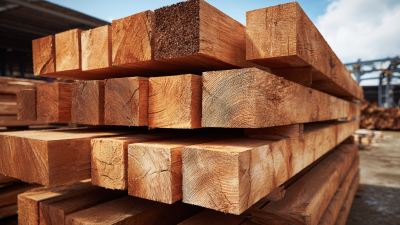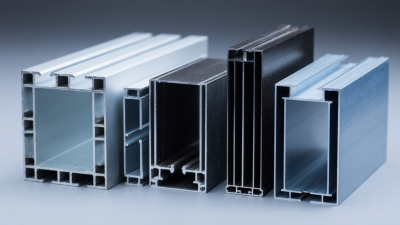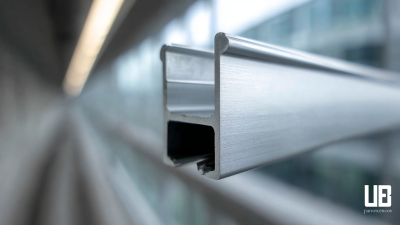In the realm of modern construction, the integration of innovative materials is paramount for achieving sustainability and efficiency. One such material that has gained significant attention is the Polyurethane Pouring Aluminum Profile. According to a recent industry report by the MarketsandMarkets Research firm, the global demand for polyurethane in construction is projected to reach USD 25.7 billion by 2025, indicating a robust annual growth rate. This surge can be attributed to the material's superior thermal insulation properties and lightweight nature, which enhance overall building performance. Moreover, the durability and resistance to environmental factors provided by polyurethane pouring technologies further establish its role as a game-changer in the construction sector. By adopting Polyurethane Pouring Aluminum Profiles, builders can streamline their projects, reduce material waste, and ultimately create structures that are not only functional but also environmentally friendly.

Polyurethane pouring has emerged as a game-changer in the construction industry, particularly in enhancing the energy efficiency of aluminum profiles. According to a report by the American Council for an Energy-Efficient Economy (ACEEE), buildings account for approximately 40% of total energy consumption in the United States, underlining the significant role building materials play in energy efficiency. The integration of polyurethane foam within aluminum profiles creates a thermal break that effectively reduces heat transfer, leading to lower energy costs for heating and cooling.
Furthermore, a study published by the International Institute of Refrigeration (IIR) indicates that buildings with polyurethane-insulated aluminum profiles can reduce energy consumption by up to 30% compared to traditional materials. By incorporating polyurethane, construction projects can achieve improved insulation properties, resulting in enhanced thermal performance and a reduction in greenhouse gas emissions. This innovation not only benefits energy savings for occupants but also contributes to a more sustainable future for the construction industry.
 Polyurethane pouring techniques represent a significant advancement in construction, particularly concerning durability and sustainability. These techniques leverage the unique properties of polyurethane, such as its flexibility and resistance to environmental factors. The incorporation of polyurethane into aluminum profiles enhances structural integrity and offers improved insulation, contributing to energy efficiency in buildings. As construction demands evolve, the integration of durable materials like polyurethane becomes essential for creating long-lasting architectural solutions.
Polyurethane pouring techniques represent a significant advancement in construction, particularly concerning durability and sustainability. These techniques leverage the unique properties of polyurethane, such as its flexibility and resistance to environmental factors. The incorporation of polyurethane into aluminum profiles enhances structural integrity and offers improved insulation, contributing to energy efficiency in buildings. As construction demands evolve, the integration of durable materials like polyurethane becomes essential for creating long-lasting architectural solutions.
Modern advancements in materials science have further emphasized the benefits of using hybrids like polyurethane in conjunction with innovative composites. Graphene-augmented concrete, for example, promises superior performance while reducing environmental impact, which aligns with the trend toward smarter, more sustainable construction practices. Additionally, the development of intelligent shape-memory polymers opens new avenues for applications in construction and beyond, showcasing how adaptive materials can revolutionize industry standards. By embracing these cutting-edge technologies, the construction sector is poised for a transformative shift in durability and functionality.
The rising costs of construction materials have prompted builders and developers to seek more efficient alternatives that provide long-term savings. Polyurethane insulated aluminum profiles present an attractive solution, as they offer enhanced energy efficiency compared to traditional materials. The insulation properties of polyurethane significantly reduce thermal conductivity, which minimizes heat loss in winter and heat gain in summer. As a result, buildings utilizing these profiles can achieve lower energy consumption, leading to substantial reductions in heating and cooling costs over time.

In terms of initial investment, polyurethane insulated aluminum profiles may have a higher upfront cost than standard aluminum options. However, when considering their durability and energy efficiency, the overall lifecycle savings become apparent. Homeowners and commercial property managers benefit from decreased utility bills and less frequent need for maintenance or replacement. Furthermore, these profiles can contribute to meeting energy efficiency regulations and standards, making them a prudent choice for future-proofing construction projects. Ultimately, the long-term financial advantages of investing in polyurethane insulated aluminum profiles create a compelling case for their adoption in modern construction.
The integration of polyurethane pouring in aluminum profiles offers significant sustainability benefits, aligning modern building practices with eco-friendly principles. Polyurethane is known for its excellent insulation properties, which contribute to reducing energy consumption in buildings. By enhancing thermal efficiency, structures require less heating and cooling, leading to lower greenhouse gas emissions and a reduced carbon footprint over time.
Moreover, the durability of polyurethane makes it an environmentally responsible choice. Unlike traditional materials that may require frequent replacement, polyurethane profiles are resistant to weathering and wear, extending the lifespan of buildings. This longevity not only minimizes waste but also decreases the demand for new resources, further promoting conservation efforts.
As the construction industry increasingly prioritizes sustainability, the use of polyurethane pouring aluminum profiles emerges as a viable and responsible approach to modern architecture.
As modern construction practices evolve, the integration of polyurethane pouring aluminum profiles is becoming increasingly vital, particularly in the context of smart buildings. According to a recent report by the International Energy Agency, the construction sector accounts for nearly 40% of global energy consumption. This statistic underscores the necessity for innovative materials that not only enhance energy efficiency but also improve the aesthetic appeal and structural integrity of buildings. Polyurethane aluminum profiles, known for their excellent thermal insulation properties, can significantly reduce energy consumption in heating and cooling systems, making them ideal for sustainable building practices.
Moreover, the versatility of polyurethane aluminum profiles allows for the creation of complex architectural designs that are increasingly sought after in smart building projects. A study published in the Journal of Architectural Engineering found that buildings utilizing these profiles experienced a 25% improvement in structural strength compared to traditional materials. This advancement not only supports the integrity of modern designs but also aligns with smart technologies that demand higher performance standards. As the demand for energy-efficient and visually striking constructions continues to grow, leveraging polyurethane aluminum profiles will undoubtedly play a crucial role in shaping the future of the built environment.






